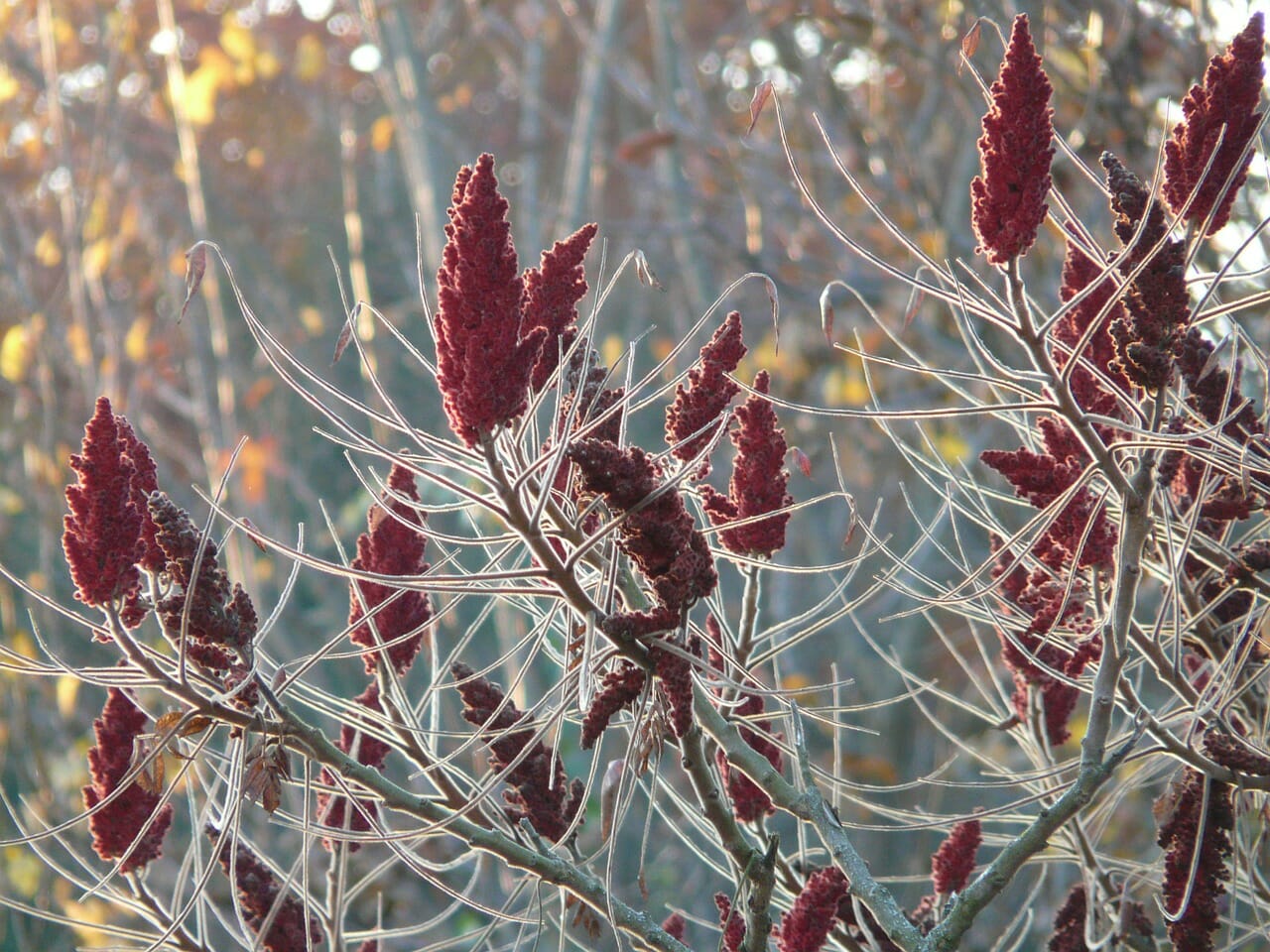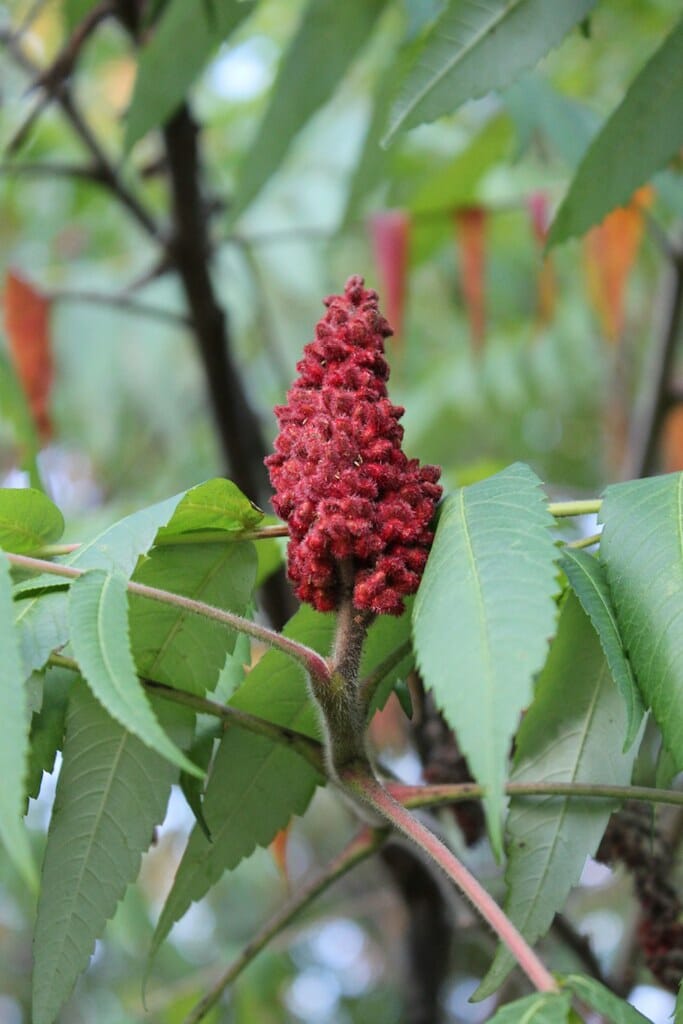It’s amazing how many of the wild plants Ontario locals think are weeds, are actually edible. Foraging is a long-practiced part of our food culture in Canada, particularly in Ontario, but until until very recently it had lost its appeal. Fast forward to today, and folks go nuts over mushrooms, wild leeks and other hard to find edibles. Peoples voraciousness for wild food is becoming a problem.
One of the best options, especially for those concerned about our fragile ecosystem, is to forage for abundant, invasive species like garlic mustard, day lillies or Japanese knot weed. At this time of year though, our favorite edible is Staghorn Sumac, Rhus typhina, an aggressive species of flowering plant in the family Anacardiaceae, native to eastern North America. This is it:

To be clear: we are not talking about poison sumac here. Poison sumac is not edible, and like any foraged plant or ‘shroom, you should be 110% sure of what you’ve found before eating it.
Staghorn Sumac, like many of our favorite edibles, is technically classified as a weed! There are 250 genuses of Sumac which can grow anywhere from four to 35 feet in size. It grows in many parts of the world – in North America, Europe, Middle East and the Mediterranean.
Sumac has upright fruit clusters, usually red and covered in a velvet fuzz (pictured above); these clusters are called drupes. The berries ripen in summer and tend to be wet and sticky when ripe.

Until the Romans introduced lemons to Europe, sumac was used as a spice to impart foods with a lemony tang and lovely burst of color. Since then, it has been used for medicinal purposes, but most people today turn it into spice mixes, teas, sauces and syrups.
Harvest the drupes between Augus and October, when they are bright and full and before heavy autumn rains that can wash out their flavor. You can dry them for later use – like many autumn spices and herbs – or make them into a tart syrup.
Soaking the unwashed berries in faucet-hot water releases the acid. The resulting concoction can be used in drinks. You’ll want to filter the liquid twice to get rid of little, irritating hairs – we use a coffee filter, but a fine sieve works too. You can gently heat it with sugar, maple or honey to preserve it longer. This syrup stores in the fridge for a couple months and can be used in cocktails, teas and more!




